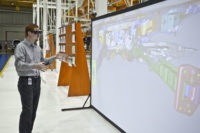Last week, the much-anticipated Tata Nano “people’s car” went on sale in India. The $2,000 microcar, which has been hailed as the 21st century’s Model T, promises to open up motoring to an entirely new group of consumers. The car features a plastic air-intake manifold.
Last week, the much-anticipated Tata Nano “people’s car” went on sale in India. The $2,000 microcar, which has been hailed as the 21st century’s Model T, promises to open up motoring to an entirely new group of consumers. It features a two-cylinder engine that produces 67 miles per gallon.
Plastic plays a key role under the hood of the Nano. Actually, the hood is located at the rear of the vehicle to provide more interior space. The car uses a plastic air-intake manifold that is manufactured by Taca Visteon Automotive Products (Prune, India), a joint-venture between Tata Motors Ltd. (Mumbai) and Visteon Corp. (Van Buren Township, MI).
Traditionally, manifolds are made from aluminum, but the Nano uses Ultramid nylon produced by BASF (Ludwigshafen, Germany). By replacing aluminum with plastic, Tata and Visteon engineers were able to achieve a 40 percent weight savings, which translates into better fuel efficiency and fewer emissions.
Plastic Plays Big Role in Tiny Nano
Looking for a reprint of this article?
From high-res PDFs to custom plaques, order your copy today!




